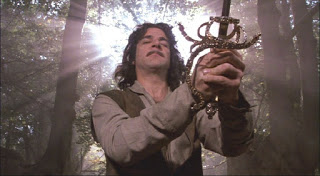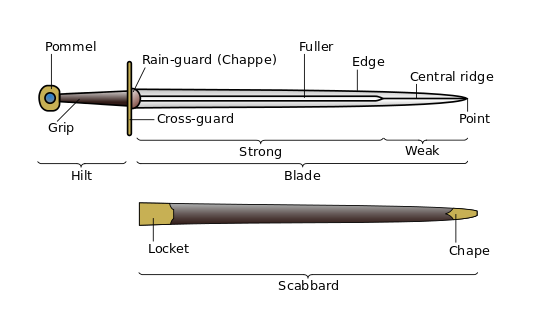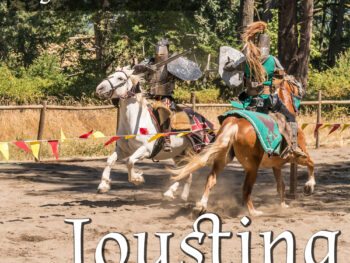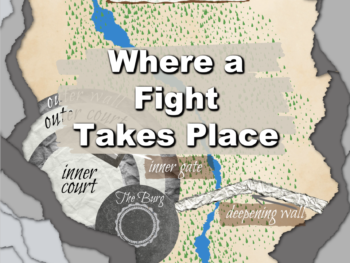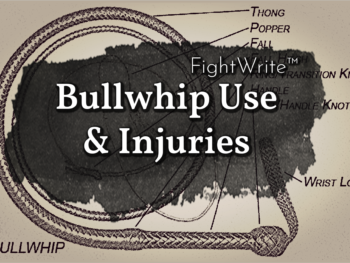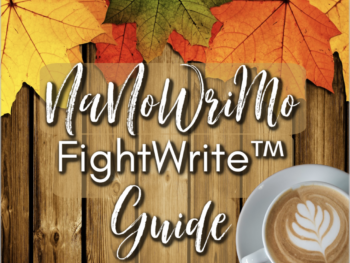If you are versed in Western/European swords, you will be able to add many more terms to this list. But, these are the basics. I will feature Asian and African sword vocabulary in other posts.
Backsword — A sword blade, which has a cutting edge only on one side. Most commonly found on curved blades, such as sabers, falchion, and cutlass.
Basket — An arrangement of steel bars, and panels that form a basket-like cage around the grip (and the wielder’s hand). These are most commonly found on Scottish basket-hilted swords, and European rapiers.
Blade — The section of the sword, which is not part of the hilt.
Cruciform — A generic term for any sword which when inverted point downward will form the shape of a crucifix.
Edge — The cutting portion of the sword’s blade.
Ferrule — A metal band at either end of the grip used to secure the leather or wire wraps. Also used as a decoration.
Finger guard — A small crescent shape bar which extends from the sword’s guard, and rises parallel to the sword’s ricasso, which enables a user to loop their finger over the guard (which increases point control, but decreases cutting power), without fear of being injured by an opponent’s blade sliding down their own.
Fuller — A groove down the center of a blade, used to both lighten a sword, and conserve sword steel (making a wider blade possible with less material). Often mistakenly called a “Blood Groove.”
Full tang — A sword tang that passes the entire length of the grip, and is attached directly to the sword’s pommel.
Grip — The handle.
Guard — The section of the sword hilt whose purpose is to protect the wielder’s hand. It may take of the shape of a simple bar, a steel basket, a flat disc, or several other forms.
Hilt — All of a sword, except for the blade proper.
Knuckle guard — A curved bar which extends from the guard to pommel, designed to prevent the user’s hand from being cut by a sliding blow from an opponent’s weapon.
Main Guache — “Left hand.” A dagger used in the 16th and 17th centuries, wielded in the left hand and used for parrying assailing swords.
Point — The tip of the sword’s blade.
Pommel — A counter-weight at the end of a sword’s hilt, used to balance the sword. Also may be used as a striking implement.
Quillon(s) — Renaissance term for the crossguard. Used almost exclusively when referring to rapiers.
Quillon block — Section of the rapier’s hilt where the guard’s arms (both bars, and rings) are attached.
Ricasso — Any narrowing or thickening of a sword’s blade, which remains unsharpened, just above the guard. Increases the user’s ability to loop a finger over the guard, to increase control of the point.
Tang — The section of the sword blade that the hilt is attached to. This part of the sword is not visible when the blade is fully mounted.
Welded tang — A tang where the steel of the blade has had another piece of steel (very often low carbon steel) welded on to it as an extension.
Wheel — A pommel that is in the shape of a flat disc. It may have added features, such as beveled edges, or raised center sections.
Wire-wrap — Spun and twisted metal wire, which is wrapped around the sword grip. Often used to increase the ability to grip a sword’s handle. Also a sign of wealth, as these grips tended to be more expensive to manufacture.
For a more exhaustive list, go to albion-swords.com. It is a fantastic resource for Western swords.
And now, for those really wanting to delve into Western “swordery,” I give you, The Princess Bride…
Until the next round at FightWrite.net, get blood on your pages.


